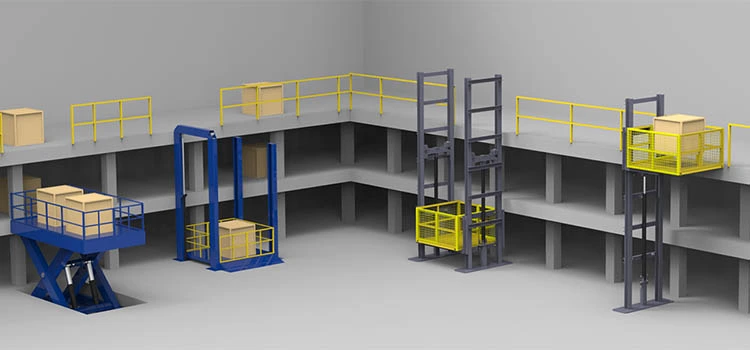Find Reputable Lift Repair Near Me for Rapid and Affordable Solution
Wiki Article
Digging Into the Globe of Elevators: Usual Concerns Encountered by Various Lift Devices
As we navigate with the vertical transportation systems of modern buildings, elevators stick out as an essential element of our lives. However, behind their smooth procedure lies a world of elaborate systems that can in some cases run into obstacles. From hydraulic elevators to traction systems and machine-room-less styles, each lift type features its set of usual issues. Recognizing these obstacles is vital for ensuring the smooth functioning of these vital systems. Let's discover the intricacies that underlie the procedure of elevators and the potential issues that can develop, clarifying the intricate internet of lift devices.Hydraulic Elevators
Hydraulic elevators, typically chosen for low-rise structures, make use of fluid stress to control the activity of the elevator auto (lift repair companies). This device includes a hydraulic pump pressing oil right into a cylinder, creating the lift to relocate the desired instructions. While hydraulic lifts are known for their smooth and peaceful procedure, they do feature their own collection of usual concernsOne prevalent trouble with hydraulic elevators is oil leak. Additionally, concerns with the control system, such as defective valves or a malfunctioning pump, can create disruptions in the elevator's motion.
Normal upkeep and prompt repairs are necessary to ensure the smooth performance of hydraulic lifts. By attending to these usual problems proactively, building owners can minimize downtime and guarantee the safety and efficiency of their vertical transport system.
Traction Lifts
When taking into consideration vertical transport systems in buildings, another usual type besides hydraulic elevators is the traction lift. Traction lifts operate utilizing a system of ropes and weights that move the lift cars and truck by clutching onto the hoist ropes. This mechanism permits for smoother and quicker upright transport compared to hydraulic systems.Among the common problems dealt with by grip lifts is rope wear. The continuous activity of the ropes within the grip system can lead to put on and tear in time, possibly causing the elevator to malfunction or come to be risky for use. Regular examinations and upkeep of the ropes are vital to ensure the elevator's proper functioning and safety.
One more issue that grip elevators may come across is associated with the control system. Issues with the control system can lead to problems such as unpredictable activity, delays in reaction times, and even full shutdowns. Routine testing and upkeep of the control system are important to avoid such issues and make certain the elevator's reliability.
Machine-Room-Less (MRL) Lifts

One of the crucial parts of MRL elevators is the compact gearless traction maker that is mounted within the hoistway. This equipment successfully drives the elevator automobile without the requirement for bulky devices discovered in standard traction we maintain lifts lifts. Additionally, MRL elevators usually utilize a weight system to balance the automobile, additional improving their energy performance.
Regardless of their benefits, MRL lifts might deal with obstacles related to upkeep and repair because of the restricted area for equipment setup. Availability for servicing parts within the shaft can be restricted, calling for specialized training for specialists. Appropriate upkeep schedules and regular evaluations are essential to make sure the ongoing smooth operation of MRL elevators.
Overloading and Weight Limitation Issues
Straining and weight restriction concerns are crucial concerns in elevator operations. Elevator producers layout raises with particular weight abilities to guarantee guest safety and security and tools durability.When lifts are overloaded, it places too much pressure on the motor, cords, and other parts, possibly creating malfunctions or malfunctions. If they spot excess weight, safety and security mechanisms such as sensors and overload sensors are in place to avoid lifts from relocating. In addition, surpassing weight limitations can bring about increased power consumption and damage on the elevator system.
To minimize overloading problems, building supervisors ought to plainly present weight limits in elevators and enlighten owners on the value of adhering to these limitations - lift repair companies. Regular maintenance checks by qualified technicians can also assist guarantee that lifts are operating within secure weight specifications. By dealing with overloading and weight limit problems proactively, structure owners can improve elevator security and performance
Electrical System Failures
Going beyond weight limits in lifts can not just lead to mechanical issues however also potentially contribute to electric system failures within the lift facilities. Electrical system failures are a crucial worry in lift operation, as they can cause unforeseen closures, breakdowns, or even safety hazards.Normal upkeep and inspections are crucial to identify and attend to potential electric concerns without delay, making certain the secure and effective operation of elevator systems. By sticking to weight restrictions and conducting routine electrical system checks, building proprietors can minimize the danger of electrical failings in lifts.
Verdict

Hydraulic elevators, often preferred for low-rise buildings, make use of fluid stress to regulate the motion of the lift cars and truck.When thinking about vertical transport systems in buildings, an additional common type apart from hydraulic lifts is the traction lift. Traction elevators operate making use of a system of ropes and counterweights that relocate the elevator car by clutching onto the hoist ropes. Unlike typical elevators that require a different maker space to house the devices, MRL lifts incorporate most of the components within the shaft, eliminating the demand for a devoted device area.In verdict, lifts face common concerns such as hydraulic malfunctions, grip system failings, and electrical system problems.
Report this wiki page